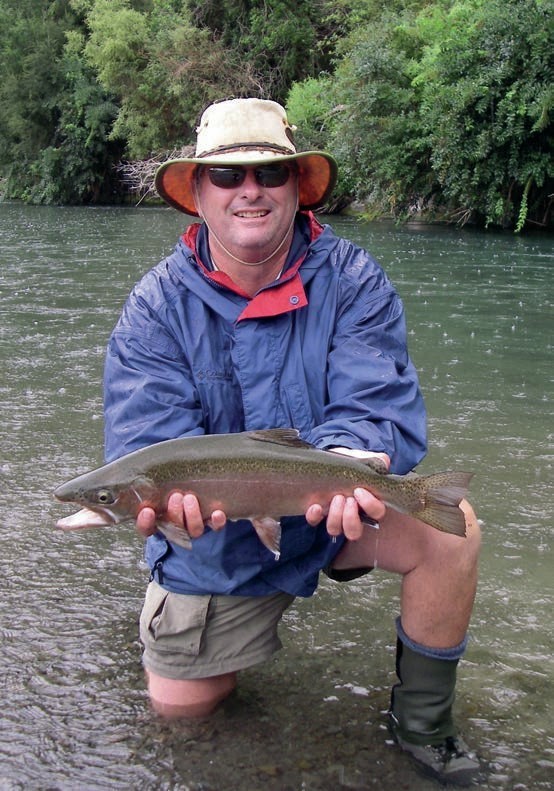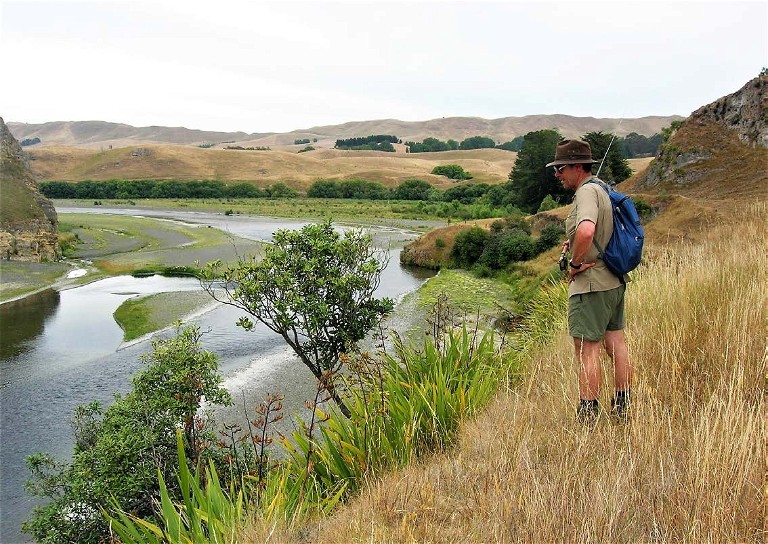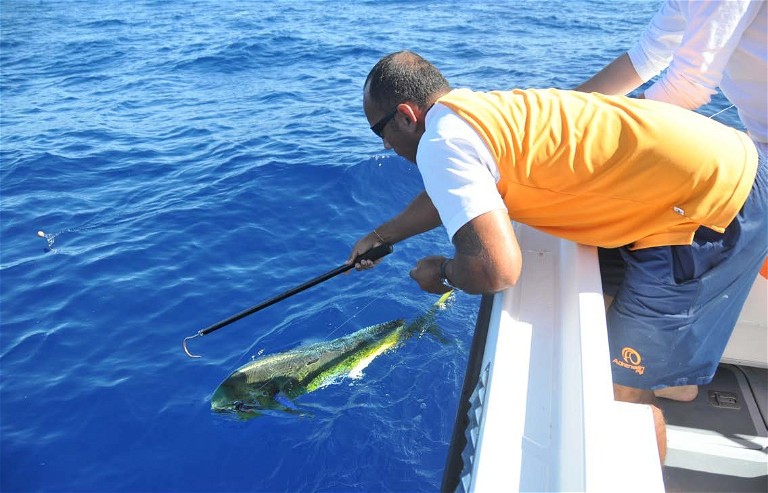WHAT EL NIÑO MEANS FOR FISHING
After three summers of La Niña systems, this season’s El Niño event should see changes in our summer weather. Sam Mossman investigates what effect this may have on fishing.

Striped marlin cope better with cooler waters than blues or blacks.

The eastern coasts may suffer from drought conditions but are more sheltered from westerlies, aiding beach launching.
It is official: El Niño has arrived and is likely to persist right through summer. So what does this mean in New Zealand, especially to Kiwi fishos? El Niño is the name given to part of a natural global climate system, also known as El Niño Southern Oscillation (ENSO). El Niño is one extreme of this oscillation, the other side of the coin is called La Niña. They can be at various strengths (this one looks fairly modest) and we can also have a relatively ‘neutral’ year when neither one rules.
Basically, it all has to do with which side of the tropical Pacific Ocean the equatorial hot water piles up on. In an El Niño year the westward blowing trade winds ease or fail and the hot water is concentrated along the tropical South American coast, out along the equator to the Dateline. On the other hand, in a La Niña year the trade winds push the hot water into the western tropical pacific around Northern Australia-Indonesia.
The Southern Oscillation Index (SOI) is a measure of where the oscillation stands and is calculated from the pressure difference between Tahiti and Darwin. Low values of this index correspond to El Niño conditions, while high SOI values are called La Niña episodes. These events occur about three to seven years apart, typically persisting for about a year.
How does El Niño affect New Zealand?
First, understand that there are no absolutes in weather – or fishing. But in general, an El Niño year has the following effects on the New Zealand spring-summer-autumn:
• Stronger or more frequent winds from the west in summer
• South-westerlies in spring and autumn
• Cooler land and sea temperatures but with sudden temperature swings
• More rain in the west and less in the east
• A higher chance of cyclones in New Zealand and the Pacific Islands.
El Niño years are usually bad news for farmers. The predominantly westerly winds hit the mountainous spines of both islands and mostly drop their rain on the western side, meaning drought conditions in the north and eastern coastal plains of New Zealand, along with higher fire risks.

Don’t stop fishing. You can still put a feed on the table.

Be prepared for sudden changes in weather conditions.
How does El Niño normally affect fishing?
I have ploughed through seasurface temperature, ENSO, and fish catch records, and a lot of correlations are plain to see.
The good news for those on the east coast is that there is some protection from the prevailing stronger westerly winds, so saltwater fishermen should at least be able to get out fishing, especially in inshore, sheltered areas. But that is about where the good news ends.
In a typical El Niño year, water temperatures can be one or two degrees cooler than at the same time in a La Niña year. This can mean:
• In some areas, undesirable species like spiny dogs, red cod and barracouta will hang around longer, making it harder to target more popular tablefish off the mid regions of New Zealand.
• Lower catch rates per time fished for striped marlin, although larger fish on average.
• Lower numbers of blue marlin, mahimahi and wahoo.
• More rough weather on the west coast, limiting boating access over bars, but better opportunities in the inshore east.
• Low river levels and warmer waters may make for difficult conditions for east coast trout fishers.
• An increased risk of cyclones disrupting holidays and fishing, although we should have less severe systems than in the last couple of years because of cooler sea temperatures.
• Lower snapper egg survival, meaning a weakened year-class, although this won’t affect anglers for about four years when these fish become ‘legal’.
This summer looks to be a modest El Niño but unfortunately for us the very best years, for sea fishing anyway, are generally those with strong La Niña conditions. These bring ample hot water from the north, with temperatures averaging in the twenties right through the summer. Everything fires – snapper, kingfish and all manner of gamefish… everything!

With projected drought conditions down the east coasts of both islands, expect low-water river conditions in some areas.

The east coast may offer more surfcasting opportunities than the west.
The downside of a La Niña summer is that, when combined with global warming, it can result in heavy and damaging rain events such as those we suffered last summer. Is this combination going to be the new Kiwi monsoon?
So, what can fishers do to adjust to the forecast El Niño conditions this summer? The first thing is: don’t give up fishing. There are no absolutes in weather or fishing. Generally, you can still put a feed on the table and have a lot of fun – but take it easy on the spawning snapper; they could do with a bit of help this season.
The specifics
Gamefish: while numbers of hot water species like blue marlin and mahimahi may be down, striped marlin have a greater tolerance for cooler water. We have hooked them in water as cold as 15 degrees, so the 19-20 degree sea temperatures you might expect in an El Niño summer should not be a huge barrier. Typically, the catch per effort numbers will be down a bit though, meaning you have to fish harder (about twice as many days per fish), but the reward is that the fish will be bigger on average, as those with larger bodies can cope better with cooler water – the law of thermal mass.
Those holidaymakers with trailer boats have the option of towing them to east coast destinations if the west coast’s notorious bars rule out that side of the island. But watch the weather, especially for potential cyclones. The good news is that cooler sea temperatures may help curb the power of heavy rainfall events such as those we suffered from last summer.

With reduced water temperatures, expect less tropical visitors, like mahimahi.
Bottom fish: it’s business as usual, although those in the mid regions of the country may find that the usual changeover from ‘vermin’ species to the more desirable snapper, gurnard and kingfish etc., might not take place until February or even March, instead of before Christmas. If you have the opportunity, it might be a smart move to take your fishing holidays in these later summer months. Again, if you are mobile, the east coast may offer more boat fishing and surfcasting opportunities than the west.
Trout and salmon: with projected drought conditions down the east coasts of both islands (and in the north too), expect low-water river conditions in many areas. Everything comes under stress as farmers want more irrigation water at a time when rivers are already low. The resulting skinny water heats up more quickly, reducing its ability to carry oxygen and doubly stressing trout, salmon and other freshwater species. Low water levels also hinder salmon migrations upstream and promote the growth of water weeds.

El Niño can bring drought conditions to some east coast regions, such as Hawkes Bay.
In these conditions, water can be several degrees cooler early in the morning and trout are more likely to bite at this time. Look for fish in rapids and runs where oxygen levels will be higher.
West coast waters may be in better condition than those in the east as they should get more rain. Larger bodies of water, including lakes, will not be as badly affected as rivers, but again, get out early when the water is coolest.
Apart from all this, enjoy your fishing over the festive season!